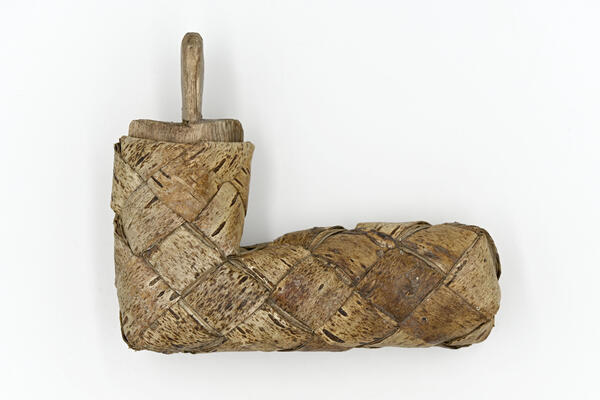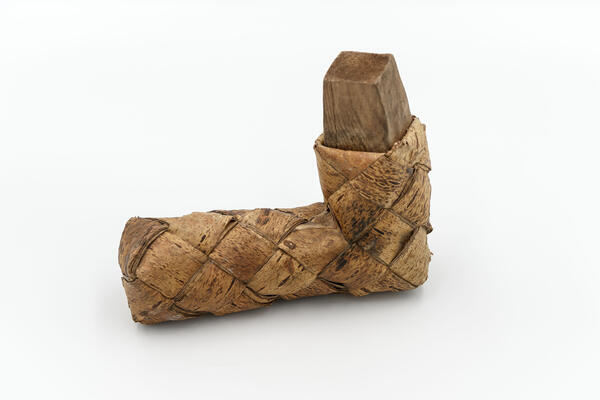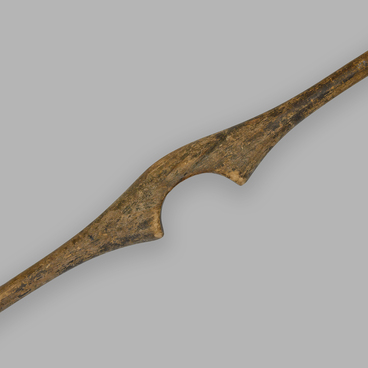The exhibition of the Polyarny Museum of History and Local Lore presents a salt container made in the 1940s–1950s. It was kept in the house of Galina Mikhailvna Gmiryanskaya in the village of Budrino, Arkhangelsk Oblast and donated to the museum in February 2004.
A small birch bark salt container (also called a “solonitsa”) — is a simple wicker household utensil for storing salt. It has a tight lid and is indispensable during trips and on the road. Interestingly, the size of the salt container was made to fit the size of the owner’s hand. The salt container itself has a curved L-shape. Birch bark was not an accidental choice. People noticed that food placed in a birch bark container stayed fresh for longer and warded off moisture. As scientists later found out, birch bark contains silver ions and is resistant to rotting. Birch bark is moisture-proof, and therefore was perfect for storing salt, flour and grains. In birch bark weaving, two sides are distinguished: the inner and the outer. The side that is naturally located to the inside of the tree is considered to be the outer side in weaving, and, conversely, the outer side of birch bark becomes the inner side.
Birch bark slightly thicker
than a sheet of office paper was used to weave this salt container. Such a thin
strip was achieved because birch bark consists of many layers which can be peeled
until the desired thickness is reached. The salt container is woven from birch bark strips using the
oblique weaving technique, with the outer side of the birch bark facing out.
The loose ends of the strips are tucked under the neck of the container giving
it neat rounded edges. In order to seal and further reinforce the utensil, a second layer of strips is
woven into the salt shaker. When weaving smaller items, the craftsperson steams
the strips of birch bark in hot water to make them softer and immediately gets
to work. Steamed, hot birch bark does not crack and is capable of taking any
shape. Even with very dense weaving and fitting of strips of birch bark to each
other, small holes still remain between individual strips. To seal these holes,
the finished item is lowered into boiling water, the birch bark gets compressed
and not a single small
hole remains.






